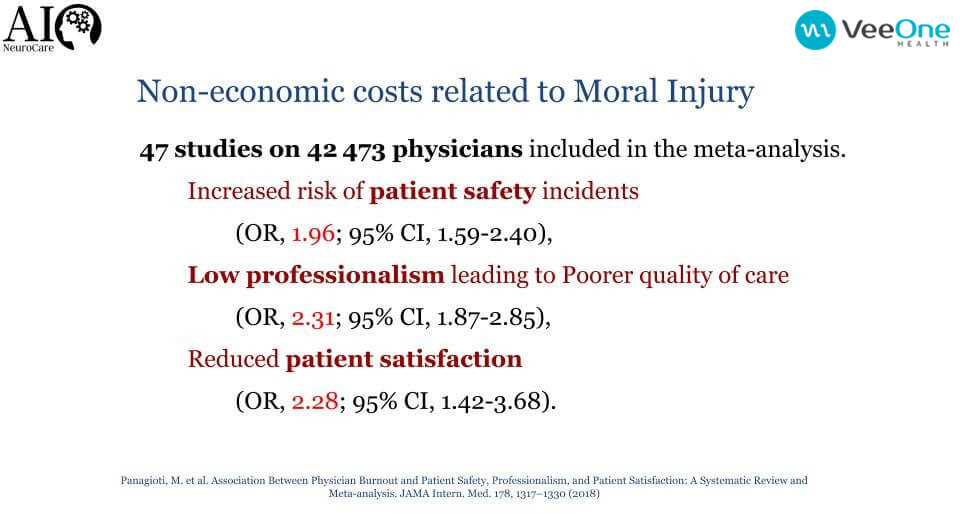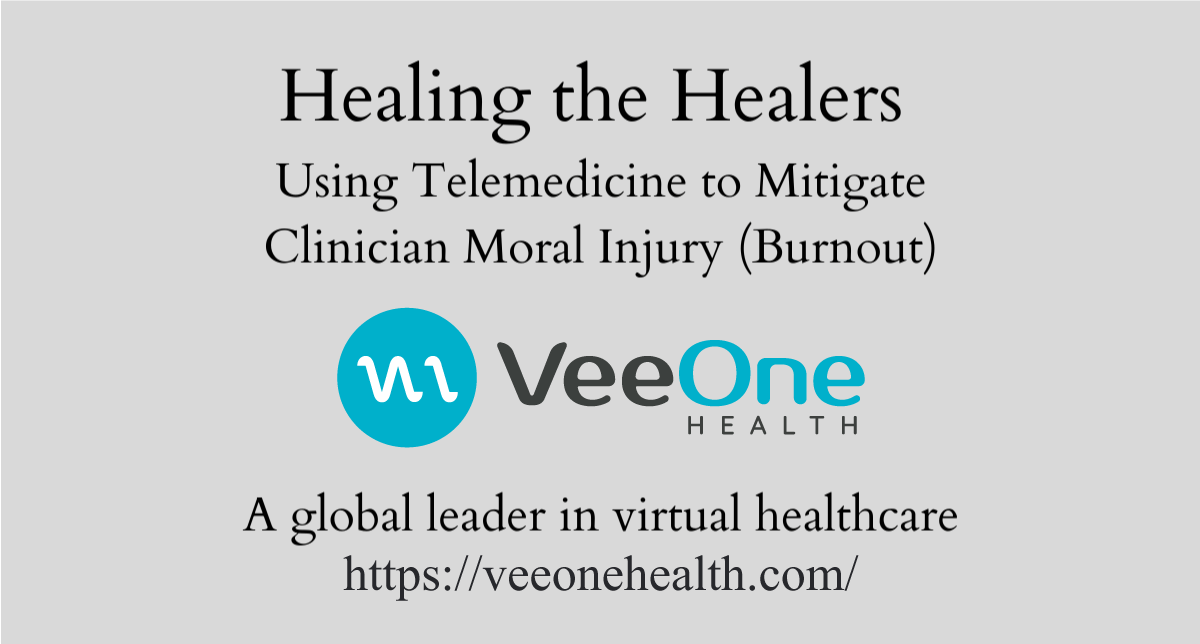One of the biggest problems we are facing in healthcare today is Burnout. We need to first rephrase the conversation from burnout to moral injury. Burnout implies intrinsic deficit. However; clinicians are known for their grit and resilience. So we need to address the problem as it is “Moral Injury”.
Moral injury describes the challenge of simultaneously knowing what care patients need but being unable to provide it due to constraints that are beyond our control. – Wendy Dean, MD, Simon Talbot, MD & Austin Dean
Moral injury occurs when we perpetrate, bear witness to, or fail to prevent an act that transgresses our deeply held moral beliefs. There is a constellation of symptoms- fatigue, inefficacy, and cynicism- that arise from “making excessive demands on energy, strength, or resource” in the workplace. Cynicism leads to physicians believing that everyone is out for themselves. This can be very dangerous because we all work in tightly integrated teams where trust in each other is crucial. Absence of trust can be a big problem and leads to medical errors.
An epidemic of clinician moral injury worsened by Covid19 Pandemic
ICD-11 defines Burnout or Moral Injury as a “syndrome conceptualized as resulting from chronic workplace stress that has not been successfully managed”. At this point, it can be considered an epidemic. In 2019, the National Academy of Medicine stated that 35-34% of the country’s doctors and nurses experience substantial symptoms of burnout. Now, because of COVID-19, it can get worse.

The implications span both monetarily and personally. Moral Injury has resulted in $4.6 billion in costs related to physician turnover and reduced clinical hours. According to MDLinx, physician burnout triples the incidence of medical errors. Clinicians with moral injury have incresaed risk of suicide, broken realtionship and substance abuce. This reinforces the fact that this is not only a personal issue, a money issue, but a health safety issue for both patient providers.
Telemedicine can mitigate some of the onerous task of being a clinician. To understand how Telemedicine can help mitigate Clinician Moral Injury, we must first understand how and why Moral Injury is an epidemic in the medical field.
A study conducted by Medscape listed Critical Care physicians, Neurologists, and Family Medicine physicians as the three types of physicians that are most susceptible to Moral Injury. The study also concluded that the three major contributors to moral injury are 1. Work-life balance 2. Bureaucratic task/Paperwork and 3.loss of autonomy.
Telemedicine can help in all three major causes of moral injury. 1. Work-life balance; geographically redistributing workload and decreasing the number of nights and weekends, which would increase family and/or vacation time. 2. Bureaucratic task/Paperwork; telemedicine is truly focused on the patient, there are less documentation requirements and other repetitive, redundant nonsense bureaucratic tasks. 3. Loss of autonomy; Telehealth allows physicians do what they want to do, take care of the patient. It allows clinicians to take care of their patient wherever they are. By mitigating these aforementioned telemedicine liberate clinicians to take care of their patients what they truly are passionate about and improve engagement and increase retention.
Watch this video Can Telemedicine help in mitigating Clinician Moral Injury/Burnout?
Telemedicine not only delivers the quadruple aim of healthcare but also helps with the epidemic of moral injury amidst the Covid19 Pandemic. However, there are challenges to overcome.
Thanks for your time! J
#telehealth, #telemedicine, #mHealth, #healthcare, #digitalhealthcare, #VirtualCare, #telecare, #televisit, #teleicu, #telehospitalist, #telepsych, #teleEEG, #remotemonitoring, #telemonitoring, #patientmonitoring, #Virtualvisit, #VeeMed, #AINeuroCare





